We know we belong to the land

In the front row, the old people were clapping and singing along. I didn’t precisely know how to process this information, but I knew a chasm had opened up under the floor of the theater. We were all tumbling into it, only some of us were enjoying ourselves.
Much has been written about Daniel Fish’s ultra-bold take on Oklahoma!, currently still on stage on Broadway, as a “dark” Oklahoma! or a “sexy” Oklahoma! Those readings of the show are both accurate, so far as these things go. At one point, Fish’s interpretation of the show is literally dark, as every light in the theater goes off atop a scene that is usually played for laughs but is, here, treated as the act of horror that it is. The sexiness is perhaps overstated (though it’s extremely present), but I think “sexy Oklahoma!” just means a show tapped in to the ways that the American id can never remain wholly suppressed.
But set that aside for now. What this new Oklahoma! is about is the American apocalypse.
Before I saw Fish’s version of the show, a colleague told me that it’s a staging of Oklahoma! about the musical Oklahoma! and this is true. The ideal state of being to walk into seeing this show is to have seen the (terrible) film version of the musical somewhere as a kid and remember almost nothing about it beyond the songs, which are typically excellent. (I don’t think this is Rodgers & Hammerstein’s best score, but it’s close.) Know nothing about the show and you might miss what’s subversive about this staging. Know too much and you might fall into its trap or leave incensed, as two Baby Boomers did at the show I attended.
Suffice to say that Fish and his cast have kept the story the same, have kept the text the same, have kept the songs the same. They’ve just liberated the show from one specific interpretation — the one that became a favorite of 1940s America and was immortalized on film — and restored its ambiguity. The college drama nerd in me, who read the script and realized that, hey, there was a lot more darkness in it than I had remembered, felt incredibly validated throughout.
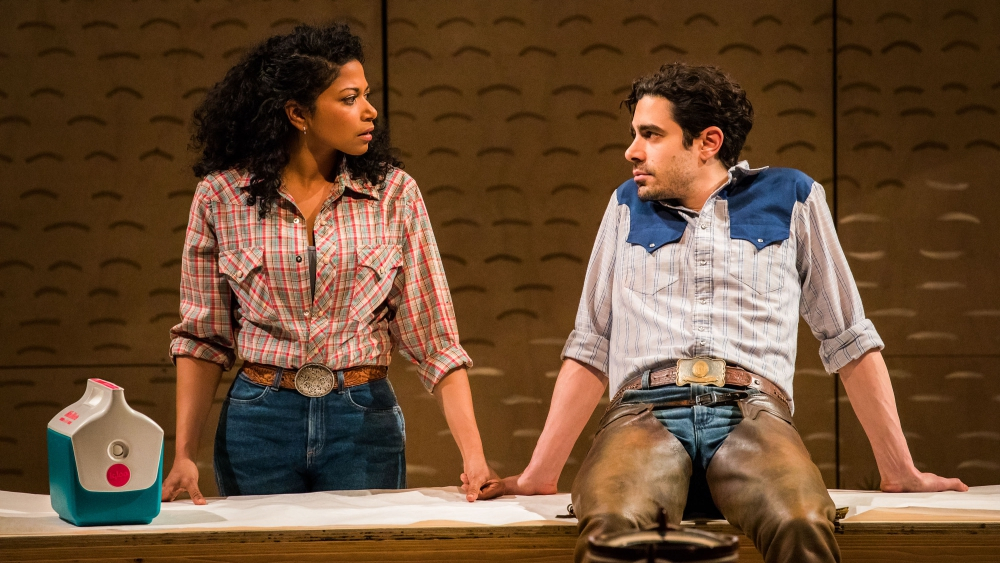
The center of the show is, of course, a love triangle (technically two love triangles, but we’re only going to talk about the most prominent one). The pure, good-hearted Laurey is a beautiful farmer’s daughter who has no farmer to be a daughter to. (She’s living with her Aunt Eller, who represents authority, more or less.) Laurey, in true 1940s musical heroine fashion, “wants” things, but can’t really put language to what those things are. She’s torn between the good-hearted cowboy Curly and the dark, brooding Jud, a farm hand.
In most versions of the story, Curly is the unquestioned hero, while Jud is a heavy, which makes this not much of a love triangle. But Laurey literally says at some point that she doesn’t trust how she feels around Jud, that he makes her feel something strange within herself. In the 2019 staging, Jud becomes a kind of free-associative stand-in for anything America would rather not think about, from sex to violence to incels to mental illness. Take your pick. He’s a darkness unacknowledged and left to fester, but there’s so much about being human bound up in that darkness. If this were game of Marry, Fuck, Kill, Laurey would marry Curly, fuck Jud, and kill both of them.
Fish stages this production in extreme thrust — so the stage is completely surrounded on three sides by the audience. Unlike many shows in the Circle in the Square Theater, it’s not in the round. Fish stages the action against a somewhat cheesy backdrop of open fields and little farmhouses, one that wouldn’t feel out of place in an especially good college production. The actors are all on the floor, some members of the audience literally sitting on the floor around them, with most viewers sitting in seats that angle up, so the effect is looking down on the floor of a basketball gym where Oklahoma! is being performed. It’s kind of a high school production gone horribly wrong.
In keeping with this theme, the ceiling of the theater is festooned with bright, colorful fringe streamers. For most of the first act, the house lights are up, meaning that you’re sitting in a space where you can watch your fellow audience members as much as the actors, should you really want to. But in act two, Fish starts playing with the lighting, in ways that felt directly reminiscent of high school on the plains to me.
And then late in act two, as Laurey’s options start to reduce, he uses the lighting to cast the shadows of the fringe streamers on the backdrop, where they quite literally become fences. This broad, open expanse, “given” to Native Americans as one end of the Trail of Tears (a genocide we really don’t talk about here), then taken right back by pioneers and settlers, is being carved up, industrialized, capitalized. It is not a space for just anybody. It’s a space for only some people.
This idea carries through to the end of the show, which involves Curly and Jud having a confrontation and Jud dying. In most productions, Jud just falls on his knife. In some, there’s a real scuffle, and it’s a little ambiguous. But in this production, Curly shoots Jud after Jud takes a single step toward him, one that is vaguely menacing but maybe not worth a straight up murder. Curly and Laurey — in wedding finery (because, yes, Curly kills Jud at his own wedding) — become drenched in blood.
There’s a show trial. The local marshal (pointedly in this production a black actor) says that something about this just isn’t right. The judge convinces Curly to say Jud was threatening him. Curly is pronounced “not guilty” and the finale begins, with everybody singing a reprise of “Oklahoma!” the most famous song from a show with a lot of famous songs.
This is where literally everything Fish has done knits together into something unlike anything I’ve quite experienced. If you are someone who was born before, say, 1965, you probably have a deep relationship with Oklahoma! It was a cornerstone of your pop culture growing up. And if you were born after 1965, it increasingly felt like a musty relic, one that was dug out as a kind of curio every so often, a look at an America that felt long faded. (It felt long faded when the show opened in 1943. It’s set in the very early 20th century after all.)
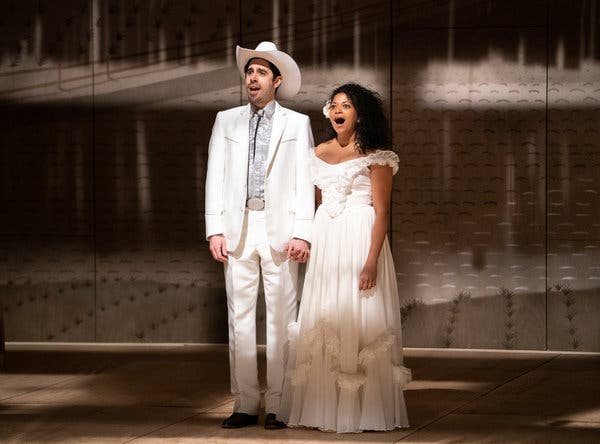
This is to say that if you were born before 1965, you are powerless against the song “Oklahoma!” You cannot stop yourself from clapping. You cannot stop yourself from singing along. And if you were born after, you probably know the song, but you’re also going to be staring at a blood-drenched tableau and thinking, “What the fuck!”
The singing and clapping at these productions has been talked about with derision by some online, but I honestly think it’s what elevates the show to a masterpiece. The people who can afford the seats on the stage floor are, invariably, older and richer than those who cannot. But by placing them on the edges of the action and having the actors play directly to them at times, Fish has more or less inserted them into the show. Thus, when they sing and clap along to the final “Oklahoma!” Fish has created a scenario where many of the Baby Boomers in the audience are literally cheering on state-sponsored murder.
I genuinely couldn’t believe he had pulled this off, but he twisted the knife another turn. Jud’s corpse stands up and begins bellowing “Oklahoma!” along with everybody else. Aunt Eller sneers, indicating that power will always have its way. And Laurey, shell-shocked, begins leaping into the air and stomping on the ground, finally and completely fenced in. (Believe me, I felt those stomps.)
In her terrific essay on the life and works of John Updike, Patricia Lockwood writes of Updike’s everyman hero Rabbit Angstrom (protagonist of four of his novels):
It’s hard not to see the grinning American skull behind Rabbit’s happiness. He is the recipient of some massive government programme so comprehensive that it plumped him in every cell, and which it is the poverty of subsequent generations to be unable even to imagine. ‘It gives him pleasure, makes Rabbit feel rich, to contemplate the world’s wasting, to know that the earth is mortal too.’ These are dispatches from the days when they could have still saved us, and the world.
It is really fucking hard to talk about the generation gap that has come to define the 2010s, because those who wrecked the world can only remember what it looked like before they wrecked it. They can only remember the Oklahoma! that was all song and dance. They can only remember a world of boundless opportunity.
But I didn’t grow up in that world. I know “Oklahoma!” but I also know what it is to drive through its length and see only fences. We are driving out toward oblivion. Somebody else chose our destination, and to entertain us on the way, they wrote a song.
Read me: If you want to know more about Oklahoma! and Fish’s production of same, this New York magazine piece by Frank Rich is really, really fucking good and made me understand just how little of Fish’s production was an invention and was just waiting to be uncovered in the text.
Oklahoma! was greeted as jingoistic entertainment in 1943, perhaps in part because a wartime audience didn’t want to see that the musical’s celebration of the platonic ideal of Great America was qualified by a brutal acknowledgment of how cruelly America can fall short. In the context of 2019, Fish’s restoration of the show is a timely refutation of the lie that America can be made great by turning back the clock to some immaculate America of the past. A great America has always been a work-in-progress. The Great America of nostalgic, reactionary fantasy, beatific and white and welcoming to all, never existed in the first place — not even, it turns out, in the bright, golden meadows of Oklahoma!
Watch me: If you want to see a very different take on a modern Oklahoma!, the pilot for HBO’s Watchmen offers one. I will say no more except to say I think it’s a must-see.
And another thing…: I’m writing this newsletter after spending the weekend at the Bay Area’s Big Bad Con, a tabletop gaming convention focused primarily on story games (roleplaying games with stripped down mechanics that focus on making sure the story told is a good one). Avery Alder’s game Dream Askew — a story about a queer enclave built after the apocalypse — had weird resonances with Fish’s Oklahoma! for me, and playing it with both the designer and some friends I knew going in and others I made at the table was one of the most profoundly moving experiences I’ve had in tabletop. Dream Askew is published with the equally excellent Dream Apart, about a Jewish shtetl in the 1800s, which was designed by Benjamin Rosenbaum. You can buy them here.
What are we doing here? If you’re reading this, it’s because I successfully ported over my old mailing list to Substack. (You were either subscribed to Episodes or Stealth. This newsletter will be an attempt to blend the two!) I miss writing newsletters, and I’m going to try to write one here, to the tune of one entry per week. I’m going to be writing about arts and culture, random personal stories, and my gender transition. Please let me know what you’d like for me to cover by replying to this email. I presume I’ll see it?
Episodes is published once per week and is about whatever I feel like that particular week. Suggest topics for future installments via email or on Twitter. Read more of my work at Vox

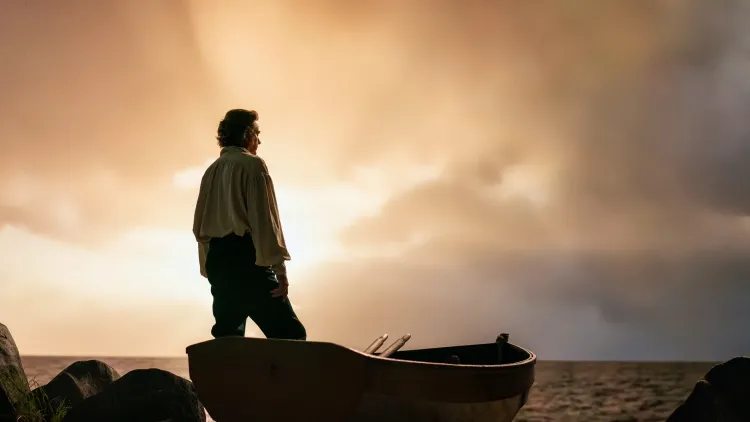
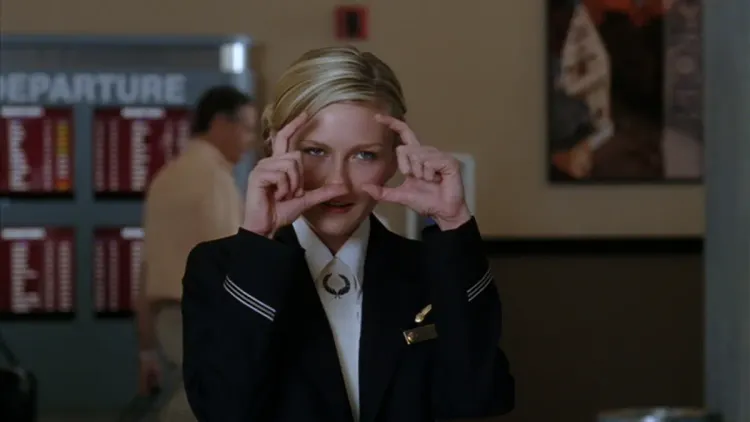
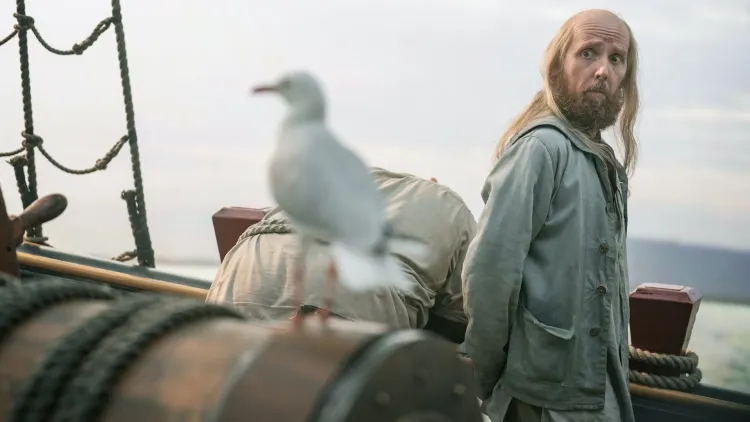

Member discussion